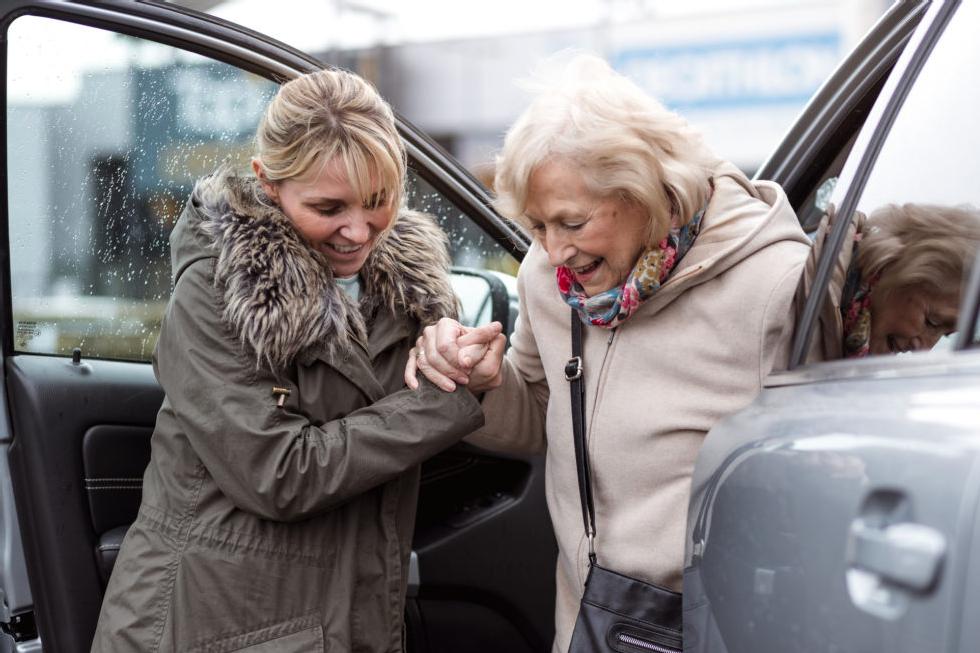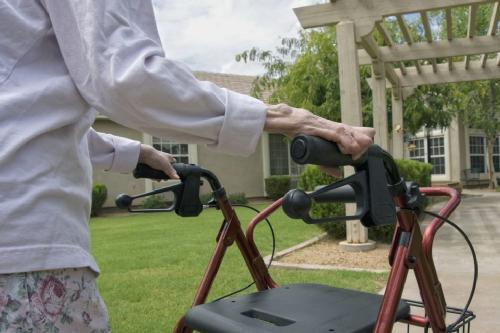
Assessing Your Loved One’s Ability to Complete Activities of Daily Living
If you recently accompanied your parent to their annual medical check-up, your loved one or you may have been asked if mom or dad needs help with their "ADLs" or "IADLs." Activities of Daily Living (ADLs) and Instrumental Activities of Daily Living (IADLs) are standard concepts that are utilized for senior care. They provide a basis for caregivers to evaluate the independence and capabilities of a senior and make care decisions accordingly. However, these acronyms and concepts can be unknown until you first encounter the terms and what they mean.
What are activities of daily living (ADLs)?
ADLs are basic tasks a person needs to be able to do on their own to live independently. Health issues and aging may make it difficult for seniors to complete everyday self-care tasks essential to keeping them healthy and safe.
The "Katz Index of Independence in Activities of Daily Living" is an effective tool used to assess the overall health and functional status of older adults and those with disabilities. This system was developed by Sidney Katz and the Benjamin Rose Hospital in Cleveland, Ohio, in the 1950s and has been used ever since. Basic ADLs include six essential skills:
- Bathing and showering: the ability to bathe self and maintain dental, hair, and nail hygiene
- Continence: having complete control of bowels and bladder
- Dressing: the ability to select appropriate clothing and outerwear and to dress oneself independently
- Mobility: being able to walk or transfer from one place to another, specifically in and out of a bed or chair
- Feeding (excluding meal preparation): the ability to get food from plate to mouth and to chew and swallow
- Toileting: the ability to get on and off the toilet and clean oneself without assistance
What are instrumental activities of daily living (IADLs)?
Instrumental Activities of Daily Living, or IADLs, are more complex activities required for senior independent living that often involve thinking and organizational skills. IADLs outlined by the Lawton-Brody scale assessment include:
- Cleaning and housekeeping, including maintenance and other home care chores
- Doing laundry
- Managing money
- Managing medications and taking medicines as directed
- Preparing meals
- Shopping for groceries and other necessities
- Transportation, including changing residences and moving
- Using communication devices, including the telephone and computer
Why are ADLs and IADLs important for caregivers?
ADLs represent everyday tasks that challenge both mental and physical capabilities. A person needs to have the physical ability to perform ADL tasks themselves, as well as the planning and mental capacity to conceptualize the tasks and understand what needs to be done.
Conversely, a decline in the ability to complete basic ADLs may not be noticeable until later stages of dementia or physical disability.
Knowing your loved one's ability to complete ADLs can help you and your aging parent's doctor answer these questions:
- Do you or a neighbor need to check on your aging parent routinely?
- Does your aging love one need physical therapy?
- Is your aging parent able to continue living independently?
- Would moving to an assisted living community be beneficial?
ADLs can also help caregivers, and health care professionals understand the level of care needed. The level of care for someone who can't complete IADLs is different from the care needed by someone who can't complete basic ADLs.
In some cases, IADL deficiencies may be managed by different service providers, such as senior meal preparation or delivery service, a housekeeper, or a money management professional. ADLs require more intensive, hands-on care.
Unfortunately, families rarely ask about ADLs until a parent or senior loved one is undergoing the assessment process for long-term care. Experts highly recommend bringing up changes in a loved one's ability to do these tasks when talking with a physician. It's a good idea to share changes in ADLs with your loved one's medical team because:
- A change in an ADL can trigger medical evaluations that may uncover a medical issue. It's important to understand the root cause of the problem or change in ability.
- Understanding root causes can help you, and your loved one's doctor works together to find ways to improve function. Some common ways to improve function include medical treatment, physical therapy, or a device such as a walker.
- Understanding ADLs is critical to have an accurate care plan. If your parent's doctor doesn't realize a functional problem, the care plan they create may not align with your loved one's abilities. For example, if the doctor isn't aware that your loved one is sometimes forgetful, then their expectation that your parent can regularly monitor their blood sugar on their own may not be realistic.
How are ADLs and IADLs assessed?
ADLs and IADLs can be assessed in a variety of ways. Caregiver input can be helpful in creating a bigger picture of a person's functional status. However, caregiver burnout and the tendency to overestimate or underestimate someone's true abilities can make this method less accurate than others.
Self-reporting can also help get the conversation about ADLs started. No one understands a situation better than the person experiencing it. Self-reporting is especially helpful when individuals have minimal cognitive decline. However, self-report measures leave the results open to a person's interpretation.
While a health care professional's report is often believed to provide the most objective view of a person's functional status, a combination of assessments may fully capture the picture of disability for a given individual.
Health care professionals commonly use these tools to assess ADLs:
- The Katz Index of Independence in Activities of Daily Living - This is the best choice for patients in long-term care, where disability is generally more severe and stable.
- The Barthel ADL Index - This assessment covers two additional domains, including grooming and stairs. It's best suited to acute care settings, as it is more detailed and better detects subtle changes in a person's health.
- The Functional Independence Measure (FIM) - This option is more comprehensive, combining ADLs with IADLs and other domains.
Signs that it's time to assess ADLs and IADLs
Keep an eye out for specific safety factors when visiting a senior relative, including:
- Driving - Have there been any accidents or close calls? Do passengers feel worried?
- Elder abuse - Are you concerned about emotional, financial, physical, or verbal abuse?
- Finances - Are there problems paying bills? Are you concerned about scams?
- Health - Has your loved one had any falls? Have there been repeated trips to the emergency room or hospital?
- Memory and thinking - Have there been problems with forgetting, getting lost, or wandering? Is there concern about poor awareness or poor judgment?
If you answered "yes" to any of the above questions, it might be time to assess your aging loved one's ADLs and IADLs, either by a medical professional or from your perspective as a family member.
ADL and IADL Assessment Tips for Caregivers
As you assess your loved one's ADL and IADL capabilities, follow these tips:
- Ask the for opinion of your siblings, friends, or neighbors
- Inquire about any changes you've noticed in your loved one's abilities. Pick two or three people to discuss your concerns.
- Assess on a spectrum
- Ask yourself whether your loved one can do the task a little bit, sometimes, or often rather than a simple "yes, they can do the task" or "no, they can't."
- Be patient
- If a person is doing a task more slowly than they used to, it doesn't necessarily mean they can't do the task at all.
- Consider the time of day and how tired they are
- Many seniors have sharper cognitive abilities and more energy in the morning.
- Consider their health
- Their abilities can be briefly impaired if they're fatigued or fighting a virus.
- Take the extra time
While it can be common to be in a hurry and find it difficult to find the time to make an extended observation, it's important to take as much time as needed and be patient in order to make an accurate assessment.
Look at your own preconceived notions about your loved one. Are they interfering with your ability to make an impartial assessment? Make the effort to help correct what you can to ensure your loved one can live life to the best of his/her ability and as independently as possible.
If your loved one is unable to perform daily tasks outlined in the ADLs and IADLs, or if you have other safety factors, it may be time to discuss increasing their level of support or moving to an assisted living community.
ADL and IADL Checklist
When it comes to assessing ADLs and IADLs, there's a lot of technical information about different assessments. This can be overwhelming for families to navigate.
- Ask your aging parent's doctor if a change in medical plan is required (for example, a complicated diabetes plan may need to be revised).
- Ask if your loved one qualifies for a service like Medicaid.
- Ask what's causing any issues or inabilities.
- Be aware of your loved one's true abilities when it comes to ADLs and IADLs.
- Consider whether the limitations have short- or long-term implications.
- Help your loved one remain independent as long as possible with adaptive assistance.
- Seek treatment.
How to get help for your loved one
If you're worried about your loved one's ability to perform everyday tasks, connect with their doctor to discuss your concerns. It's important to identify any limitations your aging parent may have, but it's even more critical to support them by finding solutions to help solve or alleviate those limitations or by finding the care they need.
Taking these steps will help your loved one to be as independent as possible so they can enjoy a greater quality of life.
In some cases, simple lifestyle adjustments such as hearing or vision aids, physical therapy, or assistive devices to make bathing, transferring, or using the toilet easier can help your loved one perform ADSs independently.
If your aging parent needs additional help, consider contacting The Classic to learn more about how our assisted living services can provide different levels of care to fit your loved one's needs.

Related Articles

Holiday Gifts for Loved Ones in Senior Living

Are You Putting Off a Move to Assisted Living?

Worried About a Move to Senior Living? Don’t Be!

Sibling Rivalry: Why Can't We Agree on Our Elderly Parents' Care Needs?

Understanding Why Your Loved One is Refusing Senior Living

Power of Attorney for Your Elderly Loved One – A Basic Guide

Tips for Transitioning to Senior Living

